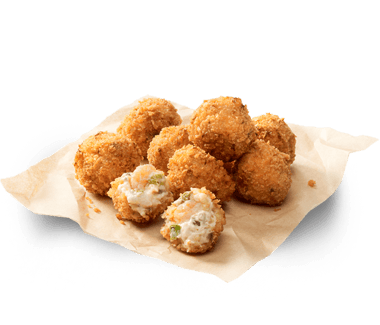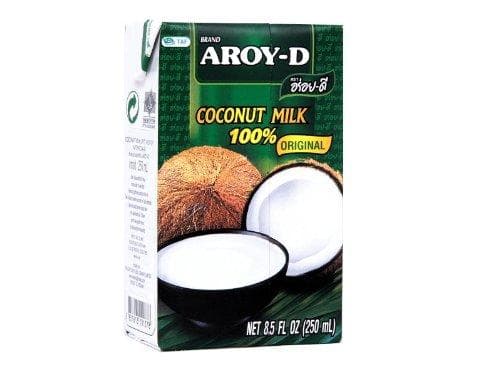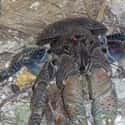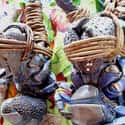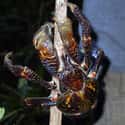-
(#9) They Are Grouchy
Coconut crabs do not enjoy visitors. They are known to burrow deep into the cool sand beneath the roots of trees as a way to hide from the sun, and will even avoid crabs of their own kind. They will aggressively defend their territory if challenged - especially if there's any food involved. When they emerge, their temperament is not much better, and they are largely keep their distance from one another.
To announce their presence, they will wave their large claws around in warning and scuttle around any other crabs they see. Decidedly unsocial creatures (unless it's mating season), coconut crabs live solitary lives - and like it just fine that way.
-
(#10) They Could Become Endangered
Despite their curious appearance and behavior, not a great deal is known about the coconut crab or whether they are in danger of become extinct. While there's no doubt they are tough critters with an incredible ability to adapt, they may be vulnerable to the biggest predator of all - humans. Even though their overall habitat is relatively small, their total population has yet to be calculated by researchers, who have categorized them as "Data Deficient," meaning they are still trying to determine their population's status.
Some conservation efforts have implemented strategies to protect them from humans by limiting the number of crabs taken by hunters and enforcing a strict licensing process.
-
(#8) People Catch Them And Eat Them
Of course, there are plenty of people crazy enough to catch a coconut crab, a feat that could easily cost them a finger if not done properly. By grabbing the two longest legs, just behind their two massive front claws, and pinning them together, it is possible to pick one up pretty easily. Or at least it looks easy. Sort of. Ok, not really.
Pacific islanders have been catching them for years and consider them to be a delicacy and an aphrodisiac. Apparently, coconut crabs taste very similar to lobster or regular crab meat. The fat in the abdomen and the eggs inside the female are considered the most delicious parts, and they can be prepared by steaming or boiling them, preferably in coconut milk.
Although the crab is not known to be poisonous, it is believed they can become toxic after eating certain plants for a long period of time. That said, they are generally not sold or eaten on a normal basis. In fact, eating a coconut crab on Christmas Island is a $5,500 fine.
-
(#11) They Have A Strange Relationship With The Sea
Unlike most crabs, this giant creature has adapted so well to life on land, it will drowned if left too long in water. Although it has modified gills surrounded by spongy tissue that must be kept moist, it achieves this through dipping its legs in the sea and sprinkling itself. It may drink some sea water to maintain its salt balance and of course, the females return to the ocean when they release their fertilized eggs.
The resulting larvae are planktonic for about a month - drifting freely around with other tiny organisms - until they settle on the sea floor and find their first gastropod shell.
-
(#1) Darwin Called Them "Monstrous"
Life is good for the coconut crab. Found on tropical islands around the Indian Ocean and parts of the Pacific, these terrestrial critters can live anywhere from 30 to 60 years. Their days consists of napping in shady corners, looking for shiny object, and of course, finding coconuts to eat, which is their favorite food.
They are the world's largest arthropods, a phylum of joint-legged creatures that also includes spiders, crustaceans, and other insects. Although the Japanese spider crab is technically larger, it lives underwater where it's weight is supported.
Apparently their overall size and strength of the coconut crab is so stunning, even Charles Darwin doubted the stories of the locals while visiting the Keeling Islands off the coast of Sumatra in 1836. He believed the natives were playing a trick on him until he finally glimpsed one for himself. Although their shell color can vary, they typically range from orangish-red to purplish-blue.
-
(#12) They Have A Crazy Sense Of Smell
Everything the coconut crab is attracted to is found by its sense of smell. Typically, it won't approach anything unless it gets a whiff of something edible. Unlike most other crabs, they live on land and therefore have specially shortened antennae to detect smells in the air over great distances.
Their olfactory system is the most well developed part of the crab's brain and is immediately drawn to smells of potential food sources like rotting meat, fruit, or coconuts.
New Random Displays Display All By Ranking
About This Tool
As we all know, the coconut crab is the largest terrestrial arthropod and terrestrial crab. But you must not be fooled by its title. In fact, the natural habitat of coconut crabs is often in tropical woods not far from the sea, and the larvae produced by the breeding pair need to grow in the sea environment. Therefore, the Western Pacific and the entire Indian Ocean are their most common places of residence.
The coconut crabs are huge and anti-social, they will steal your silverware and can tear the whole coconut with their claws. It is a great time to know more about this shocking animal, the random tool introduced 13 facts about the coconut crab that many people do not know.
Our data comes from Ranker, If you want to participate in the ranking of items displayed on this page, please click here.

